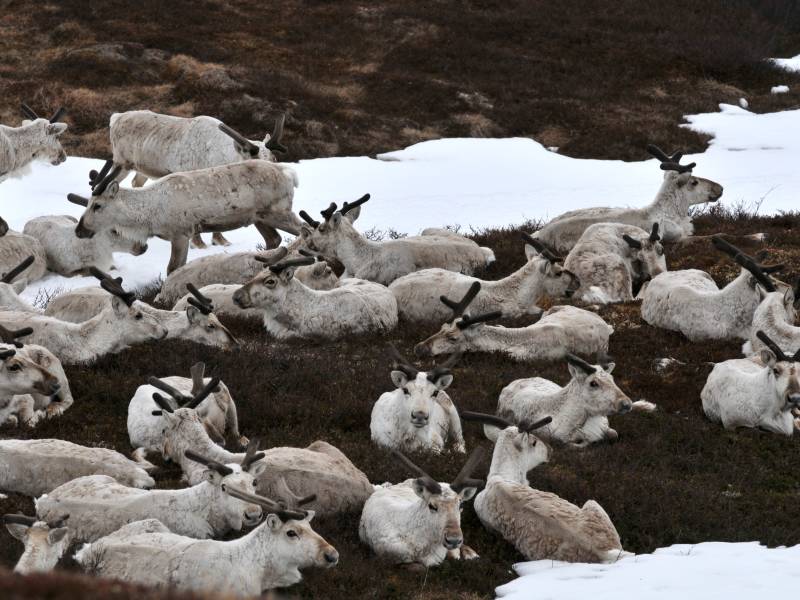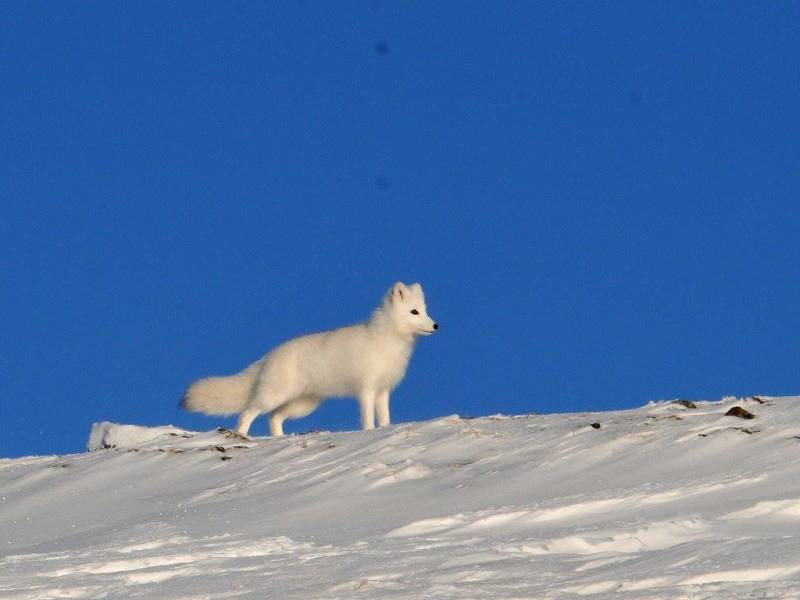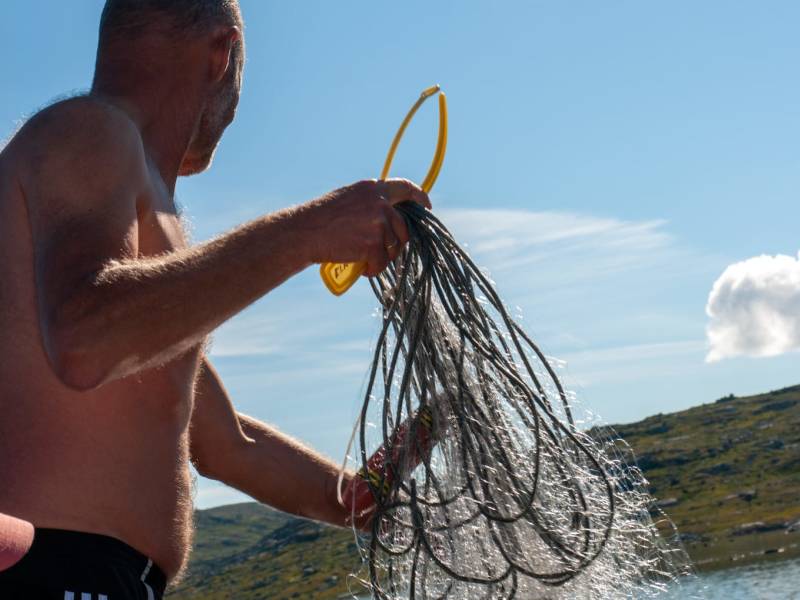Points of interest



#1
Tråastølen parking lot
Welcome to the mountains in Eidfjord! Here at the Tråastølen parking lot, you’ll find the starting point for many great mountain hikes. The hike from Dyranut to Kjeldebu and Fossli or Liseth, or the combined bike and hike from Dyranut to Lake Tinnhølen, Stigstuv, and back are good examples of such hikes. Along Road 7, you can also get experiences related to the wild reindeer at the Hardangervidda plateau, and perhaps you are tempted to take a trip into the realm of the wild reindeer? In that case, we recommend contacting Halne Fjellstugu. At Dyranut, you will be served traditional dishes with reindeer meat as natural ingredients. Starting from Halne or Dyranut, you can also enjoy beautiful hikes along marked trails on the north side of Road 7, where you can, among other things, enjoy the view of the Hardangerjøkulen glacier. Are you here during winter? Remember that snowkiting should ALWAYS take place on the north side of national road 7, to consider the reindeer's need for peace. Scroll down for information about the Tinnhølvegen road and links to both hikes, Visit Eidfjord, and Halne Fjellstugu. Foreslår at teksten under legges inn i appen uten lyd. You are welcome to use Tinnhølvegen road. Tinnhølvegen takes you very close to the border of the Hardangervidda National Park. • Be aware that parking should be done in designated areas. There is limited parking capacity, which may result in the parking lot being full. • At the Tinnhølen parking lot, there are marked areas where different types of vehicles can park. • Overnight stays in vehicles or campers are not permitted in the parking lots. • Tinnhølvegen is a toll road; please pay the fee before you drive off.



#2
Bjoreidalen parking lot
Agastølen Please don't block the tractor road The stone cabins you see are traditional mountain farm shelters. They are likely over 200 years old and were originally stone shelters associated with one of the routes crossing the Hardangervidda plateau. Such stone shelters are common at the Hardangervidda; they served as dwellings for exploiting the mountain pasture resources. The building style is a result of the available building materials in the mountains. Wood was scarce, but stone was abundant in the area or nearby. As a result, walls were built with stone, while the load-bearing structure in the roof was made of wood. From here, by following the Norwegian Trekking Association's trail network, you can do a nice hike to Halne or Stigstuv. Remember: You can only park here, no overnight stays are permitted. Read information about the Hardangervidda, the nature, and wildlife in the text below! Please don't block the tractor road Hardangervidda is the largest contiguous wild reindeer area in Norway. Here, the wild reindeer live in and around the Hardangervidda National Park. Norway has an international responsibility to preserve the wild reindeer. Hardangervidda is one of ten national wild reindeer areas, stretching from Agder in the south to Trøndelag in the north. At the Hardangervidda plateau, the wild reindeer primarily inhabit the barren mountain landscape but may, at times, utilize the forest as part of their habitat. The marginal and demanding living conditions in the mountains mean that the reindeer are constantly on the move in search of food. Wild reindeer require vast areas and migrate across large parts of their habitat. Climate, vegetation, and geographical conditions are crucial factors in determining where the reindeer find food at different times of the year. However, human activity also influences the reindeer's whereabouts. Reindeer have been a significant resource in the development of the human species (Homo sapiens). This has resulted in the reindeer fearing humans. The greatest threat to the existence of the wild reindeer is the degradation of their habitat. We humans have built roads, railways, hydroelectric developments, and cabins. This has gradually contributed to the fragmentation of the reindeer's habitat, hindering their natural migration between grazing areas. The existence of wild reindeer depends on how humans take care of their habitats. Get to know the indigenous animal that lives at the Hardangervidda. The wild reindeer has been in Norway since the inland ice retreated 10,000 years ago. The reindeer was the livelihood for the hunters who followed it during its migration between the various seasonal pastures. Trapping with pitfall traps and knowledge of the wild reindeer's migration habits have likely been the most effective trapping methods throughout history. Today, all hunting is done with rifles, and knowledge of migration habits is still important. The wild reindeer lives in herds and is called "the nomad of the mountains". It migrates between different grazing areas throughout the year. During the winter, much of its diet consists of lichen, while the rest of the year it feeds on grass, herbs, and leaves from low shrubs. The hooves of the wild reindeer are shaped to function like snowshoes and shovels in the snow. The reindeer is particularly adapted to a cold climate, with a very warm coat of hollow hair. The reindeer makes a low, grunting, or snorting sound, which is called "garting” Animals and birds at the Hardangervidda live in a "harsh climate." At the Hardangervidda plateau, characteristic species such as wild reindeer, mountain grouse, lily grouse, hunting falcon, merlin, and rough-legged buzzard live. Annually, there are fluctuations in the abundance of mice and lemmings, which affects bird populations and predators that feed on small rodents. The Hardangervidda plateau forms the southern boundary of the habitat for many Arctic animals, such as the wolverine, Arctic fox, and snowy owl. They must endure snow and frost, strong winds and cold, but also scorching sun. Therefore, it is especially important to be considerate and avoid unnecessarily disturbing of animals and birds when you are outdoors. Summer is breeding season. If you discover nests, chicks, or anxious behavior from adult birds, leave the area as quickly as possible. When encountering wild reindeer, sit down calmly and remain still until the reindeer have moved away. Wild reindeer have traditionally been an important food resource utilized by the communities around the plateau. The same applies to trout, which is the most common fish in the waters of the plateau. Hunting and fishing are rights belonging to landowners and rights holders. For state-owned land (statsalmenningen), it is possible to purchase fishing and hunting licenses at www.inatur.no. The tourist office can provide more information about the offerings. "The Right to Roam" gives us the right to travel and stay in the mountains - but it also comes with responsibilities. Dogs must be kept on a leash to prevent them from chasing and harming wildlife or grazing animals. In the national park, there is a leash requirement all year round. Outside the national park, it applies from April 1st to August 20th, or as long as there are grazing animals in the mountains. Show respect for bird and animal life. Do not disturb unnecessarily; withdraw if you discover nests or chicks. Tents cannot be pitched closer than 150 meters to private cabins and inhabited houses. Near tourist cabins, you can camp closer - check with the cabin hosts where you can pitch your tent. Be aware of designated areas along Tinnhølvegen road and associated parking lots. Avoid marking nature with cairns, tent rings, and similar. Clean up after yourself and take all your waste with you. The nature is fragile, and vegetation gets worn down. Follow established trails. Use established toilets. If this is not possible, dig a hole in the ground or lift a stone and replace it afterwards. Wet wipes are waste that must be taken and disposed of in residual waste. During summer season (April 15 - September 15), there is a general ban on bonfires and the use of open fires. Use established fire pits and make sure there is no risk of fire. The weather can change quickly in the mountains. Always bring extra warm clothing, a hat, gloves, and a flashlight. Inform someone about your whereabouts, and bring a map and compass or GPS with extra batteries. Parking should be done in designated parking areas.



#3
Tinnhølen parking lot
Welcome to Hardangervidda National Park! Hardangervidda is Northern Europe's largest high mountain plateau and varies between steep mountains in Hardanger to gentle, expansive landscapes in the east. Hardangervidda appears as a massive and endless landscape consisting of untouched nature. Approximately half of the plateau is protected as a national park. More than half of the national park is private land that has been utilized for hunting, fishing, summer farming, and grazing for countless generations. Here, there are several thousand-year-old traces of wild reindeer hunting. Many farms, especially in Hardanger, had summer farms several days' march into the plateau. Old summer farms and stone cabins adorn the landscape and hold significant cultural and historical value. A vast network of trails and ski tracks makes Hardangervidda accessible to hikers and outdoor enthusiasts. The trail and track network connects a number of serviced and unserviced tourist cabins. July-August is the best time for hiking at Hardangervidda. The western part offers spectacular scenery with high mountains, deep valleys, and beautiful waterfalls. The eastern part invites to hiking in open and gentler landscapes. Many lakes and rivers make the area a paradise for sports fishing. Hardangervidda has plant and animal life associated with the high mountains. Europe's largest wild reindeer population lives here, surviving by freely roaming the plateaus in search of food. The wild reindeer avoid humans, so keep your distance. Humans have been hunting reindeer for over 50,000 years, so fear of humans is ingrained in their genes. Arctic foxes have been reintroduced in recent years and appear to have reestablished themselves at Hardangervidda. The plateau has many shallow lakes and marshes with large numbers of wetland birds. Birds of prey like the hunting falcon, merlin, and rough-legged buzzard soar in harmony with the populations of prey animals. Traveling on Tinnhølvegen road is allowed, but please read the text below for more information. You are welcome to use the Hardangervidda National Park on foot or by bike on Tinnhølvegen road and on approved tractor trails. All motorized travel in the national park (inside the gate) is illegal without authorization or dispensation from the Act on Motor Traffic and the Protection Regulation for Hardangervidda National Park. In the national park, e-bikes are considered motor vehicles and are not allowed to be used. Eidfjord Mountain Board administers hunting and fishing in the state common land. The use of motorboats on lake Tinnhølen is only permitted in connection with net fishing and transportation related to wild reindeer hunting. Hardangervidda is known for its many fish-rich lakes and watercourses with fine mountain trout. There are many marked trails and several serviced and self-serviced tourist cabins. The wild reindeer requires vast areas, and it’s important to consider the reindeer's need for peace. To avoid disturbing the reindeer, follow the marked trails. The areas near roads and north of Road 7 are less frequented by the wild reindeer and are good hiking choices considering the reindeer. You can get information about hiking opportunities at Hardangervidda at the tourist office in Eidfjord town center as well as on ut.no. The wild reindeer has traditionally been an important food resource utilized by the communities around Hardangervidda. The same applies to trout, which is the most common fish species in the mountain lakes on the plateau. Hunting and fishing are rights belonging to landowners and rights holders. For state-owned land (statsalmenningen), it is possible to purchase fishing and hunting licenses at inatur.no. The tourist office is happy to provide further information about such offers. (Copyright https://www.norgesnasjonalparker.no/nasjonalparker/hardangervidda/):
